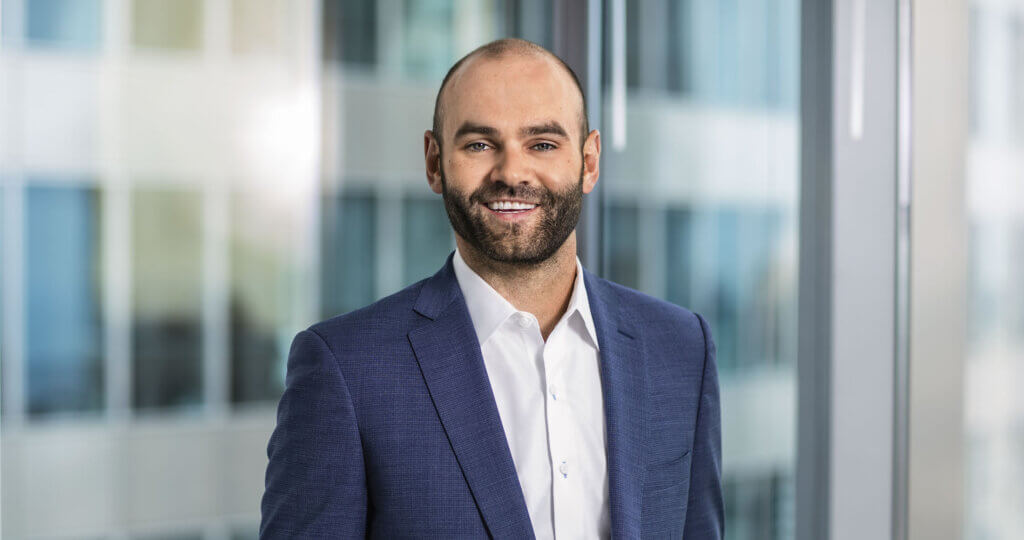Oakmark Global Fund - Investor Class
Average Annual Total Returns 12/31/15
Since Inception 08/04/99 10.24%
10-year 6.45%
5-year 7.14%
1-year -4.38%
3-month 5.85%
Gross Expense Ratio as of 09/30/15 was 1.12%
Past performance is no guarantee of future results. The performance data quoted represents past performance. Current performance may be lower or higher than the performance data quoted. The investment return and principal value vary so that an investor’s shares when redeemed may be worth more or less than the original cost. To obtain the most recent month-end performance data, view it here.
Another Year of Divergences
Last year at this time, we wrote about the divergence between solid U.S. stock market returns and the losses realized in most other countries. Despite more modest results overall, 2015 also experienced its share of divergences, but these divergences had different characteristics. The strength of the U.S. dollar in 2015 made it more difficult for U.S. investors to produce positive international returns. Many European markets, along with China and Japan, were solidly profitable for local investors, but translation to dollars minimized or negated these returns. Emerging markets, as well as developed countries with significant exposure to commodity prices (e.g., Australia), suffered meaningful declines. In terms of economic sectors, the significant losses in energy and materials pulled the MSCI World Index into negative territory despite gains for consumer, technology and health care stocks, which have larger index weights. Market capitalization also proved divergent. In the U.S., large capitalization issues bested their smaller counterparts, while in non-U.S. markets small cap issues outperformed. Once again, it was a challenging year to be a U.S.-domiciled diversified global investor.
Although the year ended on a sour note, the fourth quarter as a whole was solidly positive. The Oakmark Global Fund’s three-month return was 6%, which matched the MSCI World Index’s return in the period and outperformed the Lipper Global Fund Index’s gain of 5%. For all of calendar 2015, the Fund declined 4%, which contrasts to 1% losses for the MSCI World Index and the Lipper Global Fund Index. Since its inception in 1999, the Fund has achieved a compound annual rate of return of 10%, which compares to 4% for the MSCI World Index and 5% for the Lipper Global Fund Index.
The U.S., Germany and China contributed most to the Fund’s return in the quarter, while France and Mexico were the only countries that contributed negatively. The five largest contributors to the Fund’s quarterly return were Baidu (China), Alphabet (U.S.), Interpublic Group (U.S.), Samsung Electronics (Korea) and Daimler (Germany). The Fund holdings that detracted most were Tenet Healthcare (U.S.), Credit Suisse (Switzerland), Chesapeake Energy (U.S.), LafargeHolcim (Switzerland) and Union Pacific (U.S.).
Germany, China and Australia contributed most to investment return this year, while the U.S., the U.K. and Japan detracted most. Demonstrating the year’s idiosyncratic character, all but two of the top five 2015 contributors and detractors were U.S.-domiciled companies. The leading contributors from the U.S. were Alphabet, Health Net and Interpublic Group. Baidu (China) and Julius Baer (Switzerland) were the non-U.S. entries to the contributors list. The largest detractors were Tenet Healthcare, Chesapeake Energy, Union Pacific, National Oilwell Varco and Applied Materials.
Portfolio Activity
Although most developed markets closed out the year with modest or negative returns (when expressed in U.S. dollars), considerable volatility occurred beneath the surface of the market averages. This has availed us plentiful opportunities to reorient the portfolio. We initiated three new international holdings in the quarter and eliminated two positions, one international and one U.S. Despite this trading activity, the U.S. portfolio weight actually grew in the period as the domestic market rebounded from its summer swoon. The Fund remains underweight in the U.S. relative to its position in the MSCI World Index, an outcome of our search for the best available values. We look for value wherever that search takes us, and if we stray from benchmark weights, so be it. Switzerland continues to be the Fund’s meaningful overweight allocation relative to the index.
Concerns of slowing growth in emerging markets has allowed us to add what we believe is yet another well-run, dominant company with solid secular trends at an attractive price. Based in Mexico, Grupo Televisa is a media company and the world’s largest producer of Spanish-language content. Not only is Televisa the dominant content provider in Mexico, with approximately 70% of the viewership market share, it also controls over 60% of the pay television market via its ownership of several cable assets and Sky Mexico. Considering that pay television and broadband in Mexico have only reached about 50% and 45% of their respective markets, we believe these factions will drive Televisa’s growth and boost its earnings in the coming year. Additionally, we find Televisa’s target audience in Mexico and the U.S. to be attractive, as the population is young and growing with increasing wealth.
We also initiated a position in MTU Aero Engines (Germany). The company develops and manufactures engines, as well as offers commercial and military engine services and support. We like that MTU Aero Engines is a trusted partner of aircraft engine original equipment manufacturers, such as General Electric and Pratt & Whitney, which have attractive long-term secular growth prospects. We believe MTU will also benefit from exposure to Pratt’s geared turbofan (GTF) concept, giving it a 15-year head start on its competitors to take market share in this new technology. Lower profit margins in the short term, related to the ramp-up of these new engines, have caused the share price to drop well below our estimate of intrinsic value. Over the medium and long term, we expect higher margin service revenues to boost profitability and create a large, steady stream of cash flow.
We recently started repurchasing OMRON, a successful investment that we sold two years ago when it hit our perception of fair value. OMRON’s share price has been weak recently given cyclical headwinds facing some of the company’s smaller businesses. Despite these weaknesses, we find OMRON very attractive, especially its Industrial Automation Business (IAB), which accounts for about 40% of its overall revenues. In our assessment, IAB will be a key growth driver for the company going forward, as the division continues to improve its operating margins following the financial crisis. In a recent meeting with OMRON’s management team, they reiterated their focus on increasing shareholder value by reinvesting in higher return-on-capital businesses and, unlike many other Japanese corporations, using the company’s strong balance sheet to regularly return capital to shareholders via dividends and stock repurchases.
Franklin Resources was our one U.S. elimination. Franklin’s management, brand name, global network and rock-solid balance sheet had attracted us, but the company’s exposure to emerging markets, combined with the broad move away from actively managed funds, has impaired the company’s ability to grow. We still find Franklin to be a desirable enterprise and look forward to better opportunities to own the shares.
We also sold our long-term holding in Nestlé to help fund our new names. We continue to believe this is a high quality business, but it is less attractive at current prices.
Currency Hedges
We continue to believe some currencies are overvalued versus the U.S. dollar. We maintained our defensive currency hedges and ended the quarter with approximately 26% of the Swiss franc and 9% of the Australian dollar hedged.
Thank you for being our partners in the Oakmark Global Fund. Please feel free to contact us with your questions or comments.
The holdings mentioned above comprise the following percentages of the Oakmark Global Fund’s total net assets as of 12/31/15: Baidu, Inc. 1.5%, Alphabet Inc., Class C 4.5%, The Interpublic Group of Cos., Inc. 3.6%, Samsung Electronics Co., Ltd. 2.6%, Daimler AG 3.7%, Tenet Healthcare Corp. 2.1%, Credit Suisse Group AG 5.4%, Chesapeake Energy Corp. 0.5%, LafargeHolcim, Ltd. 3.2%, Union Pacific Corp. 2.0%, Health Net, Inc. 2.7%, Julius Baer Group, Ltd. 4.0%, National Oilwell Varco, Inc. 0.7%, Applied Materials, Inc. 0%, Grupo Televisa S.A. 0.6%, MTU Aero Engines Holdings AG 1.4%, General Electric Co. 0%, United Technologies Corp. (Pratt & Whitney) 0%, OMRON Corp. 2.3%, Franklin Resources, Inc. 0%, and Nestle SA 0%. Portfolio holdings are subject to change without notice and are not intended as recommendations of individual stocks.
Click here to access the full list of holdings for The Oakmark Global Fund as of the most recent quarter-end.
The MSCI World Index (Net) is a free float-adjusted market capitalization weighted index that is designed to measure the global equity market performance of developed markets. This benchmark calculates reinvested dividends net of withholding taxes using Luxembourg tax rates. This index is unmanaged and investors cannot invest directly in this index.
The Lipper Global Funds Index measures the performance of the 30 largest mutual funds that invest in securities throughout the world. This index is unmanaged and investors cannot invest directly in this index.
The Fund’s portfolio tends to be invested in a relatively small number of stocks. As a result, the appreciation or depreciation of any one security held by the Fund will have a greater impact on the Fund’s net asset value than it would if the Fund invested in a larger number of securities. Although that strategy has the potential to generate attractive returns over time, it also increases the Fund’s volatility.
Investing in foreign securities presents risks that in some ways may be greater than in U.S. investments. Those risks include: currency fluctuation; different regulation, accounting standards, trading practices and levels of available information; generally higher transaction costs; and political risks.
The percentages of hedge exposure for each foreign currency are calculated by dividing the market value of all same-currency forward contracts by the market value of the underlying equity exposure to that currency.
The discussion of the Fund’s investments and investment strategy (including current investment themes, the portfolio managers’ research and investment process, and portfolio characteristics) represents the Fund’s investments and the views of the portfolio managers and Harris Associates L.P., the Fund’s investment adviser, at the time of this letter, and are subject to change without notice.





